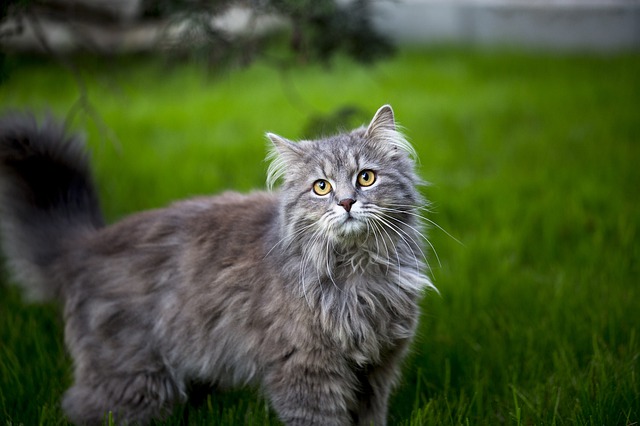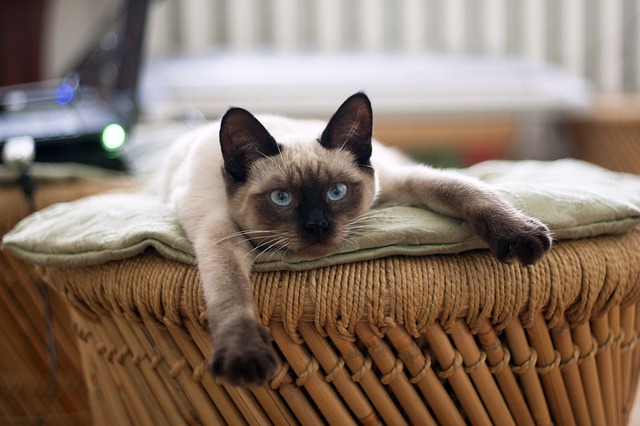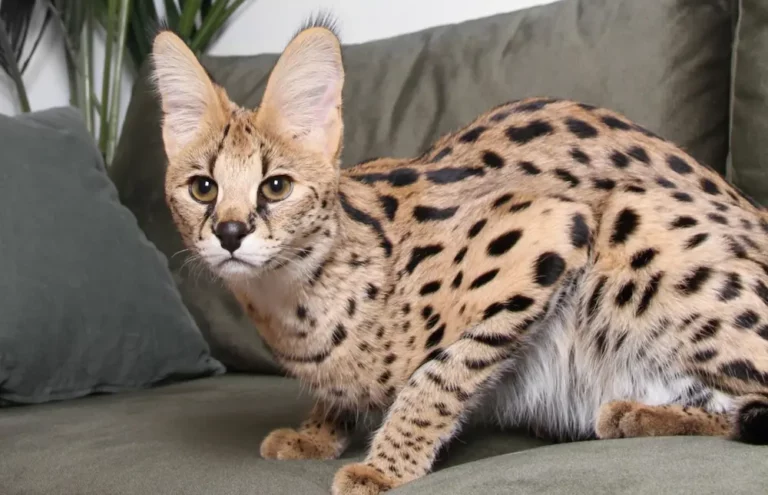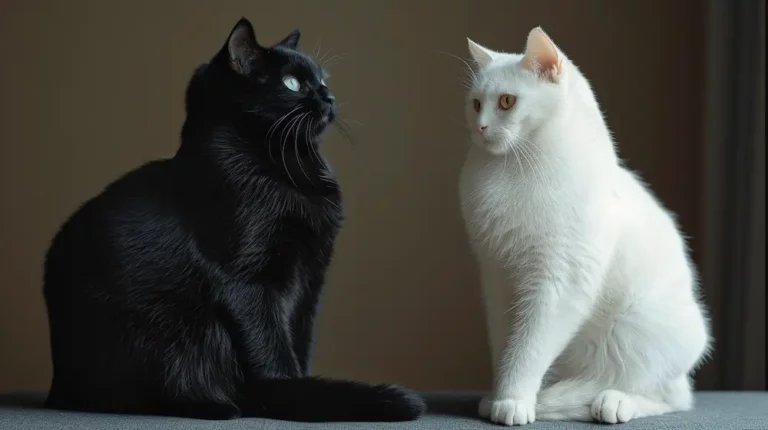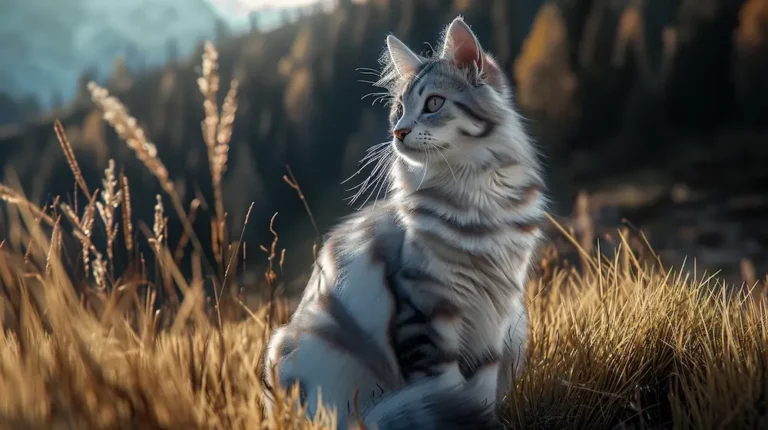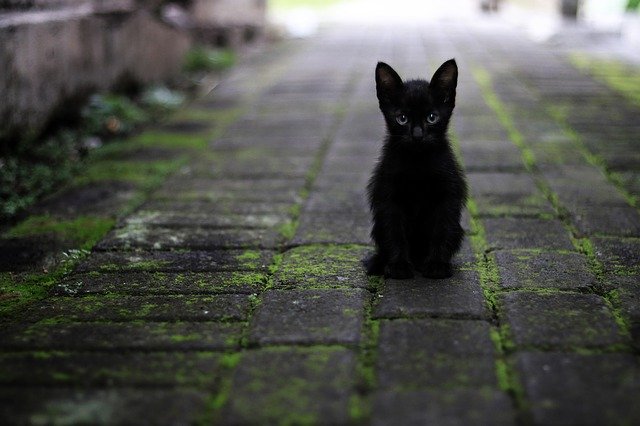9 Rarest Cat Breeds You Probably Never Heard Of
Have you ever wondered beyond the familiar purrs of a Siamese or the playful pounce of an American Shorthair?
There’s a whole world of felines out there, some so rare you might not have even heard of them.
Imagine a
I stumbled upon some fascinating facts that made me realize just how diverse the
In this text, I’ll take you through a journey of discovery, introducing you to nine of the rarest
Whether you’re a
Let’s jump into the world of these extraordinary felines and uncover their secrets together.
1. Sokoke Cat

As we investigate into the exploration of the world’s rarest
Originating from the enchanting forests of Kenya, this breed is a hidden treasure awaiting discovery.
Unique Characteristics
When I first came across the Sokoke
- Aesthetic Appeal: Sokoke Cats have a captivating look. They exhibit short, glossy brown fur adorned with tabby markings, which isn’t just beautiful; it’s also a testament to their wild heritage. Picture a sleek, agile creature moving with grace, and you’ve got the Sokoke. With their height ranging from 7 to 8 inches and weight between 5 to 10 lbs, they possess a delicate balance of elegance and strength.
- Personality Plus: But, it’s not just their looks that are unique. Sokoke Cats have a personality all their own. Unlike other breeds that might seek out your lap for a cozy nap, don’t expect a Sokoke to cuddle up in the same way. They value their personal space, preferring to sit beside you rather than on you. This might sound off-putting at first, but it’s actually quite endearing. Their presence is comforting, a silent companionship that’s both calming and unintrusive.
- Engagingly Playful: Besides, Sokokes deftly balance their need for independence with a playful, energetic spirit. They find joy in interactive play, whether with kids or other cats, making them excellent family pets. Think of them as the friend who’s always up for an adventure but respects your boundaries.
To bring a Sokoke into your life, it’s essential to understand and appreciate these traits.
Their unique blend of autonomy and companionship requires a special approach:
- Give Them Space: Always remember, Sokokes cherish their independence. Create an environment where they can explore and retreat as they wish.
- Interactive Playtime: Invest in toys that encourage active participation to engage their playful nature. This not only entertains them but also strengthens your bond.
- Patience Is Key: Like any relationship, building a bond with a Sokoke takes time. Be patient and let their affection for you unfold naturally.
2. Kurilian Bobtail
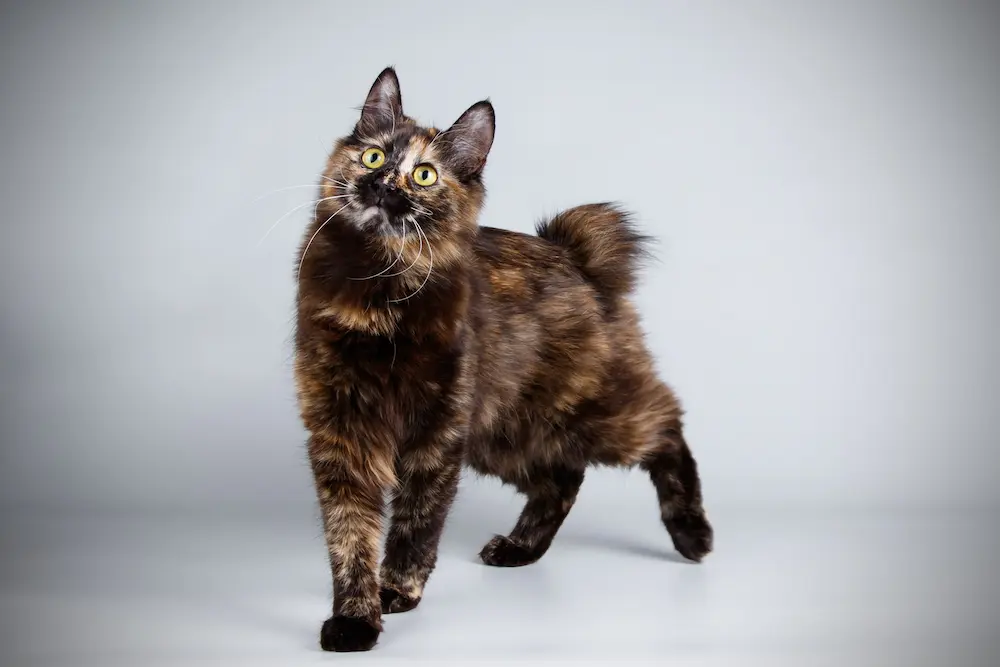
After exploring the Sokoke’s impressive traits, let’s jump into another fascinating breed, the Kurilian Bobtail.
This breed may not be as well-known as some others, but it’s truly captivating, blending the allure of wild looks with a friendly demeanor.
So, what makes the Kurilian Bobtail stand out?
Unique Features
The Kurilian Bobtail is a breed that commands attention, thanks to its unique physical and personality traits.
Here’s what sets them apart:
- Short, Pom-Pom Tail: Unlike any other
cat you’ll likely encounter, the Kurilian Bobtail boasts a short, bushy tail that resembles a pompom or a whisk. This isn’t a result of human manipulation but a natural genetic trait. Imagine a cotton ball stuck on the end of their body – that’s the Kurilian tail! - Sturdy Build: Standing 10 to 14 inches tall and weighing between 8 to 12 lbs, these cats have a robust and muscular physique. Their appearance exudes strength, yet they move with unexpected grace and agility.
- A Natural Breed: Originating from Russia’s Kuril Islands and Sakhalin Island, the Kurilian Bobtail is not crafted through selective breeding. They’re as nature intended, with no two tails alike. This hallmark of authenticity makes each
cat unique. - Companionable Nature: Even though their wild, rugged exterior, Kurilian Bobtails are incredibly social and loving. They bond well with families and other pets, displaying a loyalty and affection that’s truly heartwarming. Picture a feline friend that greets you with enthusiasm at the door, akin to a dog but with the elegant grace of a
cat . - Adaptability: These cats are known for their adaptability, thriving in various environments. Whether in a bustling family home or a quiet apartment, they’ll find their niche and fill your space with joy and playfulness.
- Distinct Color Patterns: While their tail is the most obvious unique feature, their coat also deserves mention. The Kurilian Bobtail comes in a variety of colors and patterns, ensuring that no two cats are exactly alike. From vibrant reds to deep blues, their fur can be a world of shades.
3. LaPerm Cat
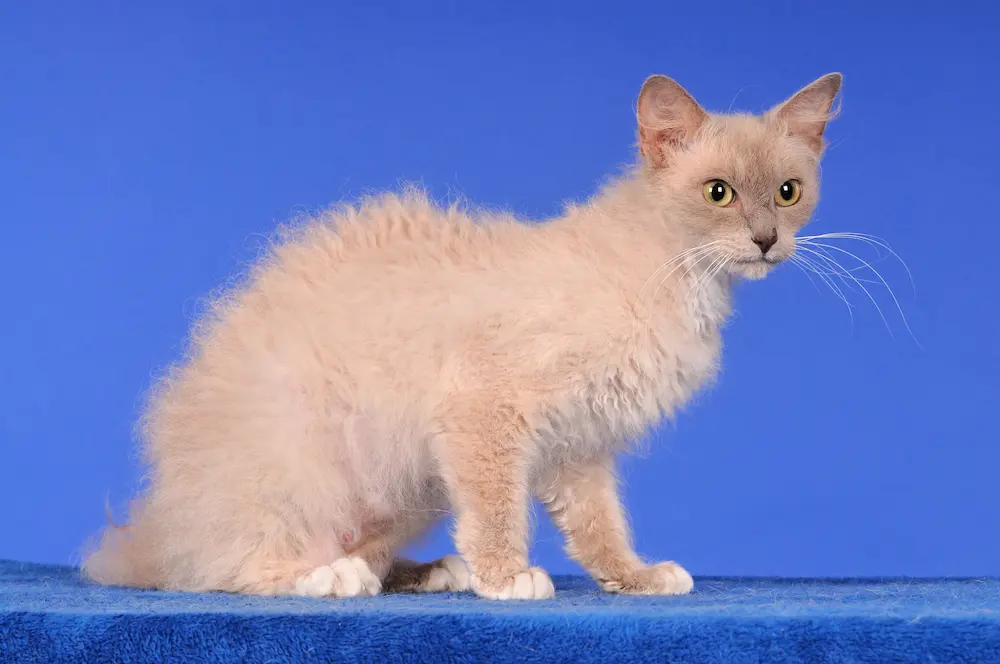
Moving on to another unique feline, let’s jump into the world of the LaPerm
Distinctive Traits
The LaPerm
This distinctive coat is not just for show; it’s a result of a spontaneous genetic mutation, making it a fascinating subject of study.
Their fur can range in variety, coming in multiple colors and patterns.
Imagine the soft, rippled waves of a gently moving stream; that’s the kind of pattern their fur mimics.
But, even though its luxurious appearance, the LaPerm
They shed very little, which means less grooming time and more playtime with your furry friend.
It’s a common misconception that curly fur must require intricate care, but I’m here to tell you that’s not the case with the LaPerm.
A simple, regular brushing session will keep their coat in perfect condition and reduce the possibility of mats forming.
Also, these cats are not just about looks.
They’re known for their friendly, gentle demeanor, making them ideal companions, especially for first-time
Their adaptability and sociable nature mean they fit well into various living environments, be it a bustling family home or a quiet apartment.
Also, LaPerms are quite the intellectuals.
They’re playfully mischievous, always on the lookout for a new adventure or puzzle to solve.
Teaching them tricks or engaging them in interactive play can be incredibly rewarding.
Watching a LaPerm
So, if you’re drawn to the idea of a
Whether you’re intrigued by their fascinating fur or looking for a companion that’s as intelligent as they are gentle, this breed has a lot to offer.
Trust me, welcoming a LaPerm into your home means embracing a bit of the extraordinary – and who wouldn’t want that?
4. Peterbald
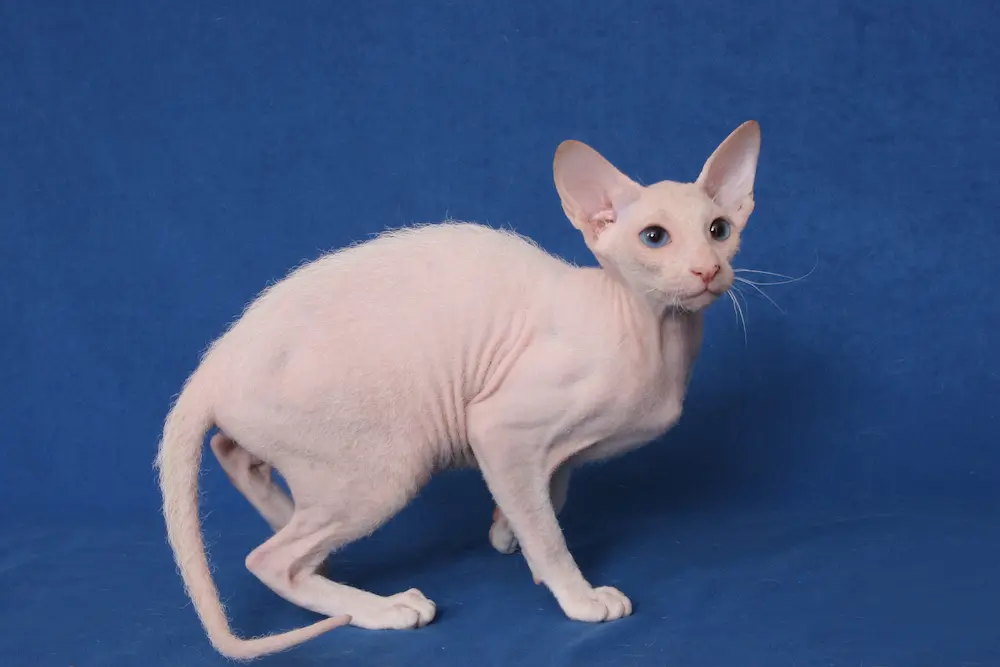
Unique Qualities
Diving into the world of Peterbald cats, you’ll find they’re not your average feline.
First off, let’s talk about their toes—yes, their toes!
These cats boast long, webbed front toes that are not just for show.
This unique feature means Peterbalds are exceptionally good at grasping objects, much like we use our fingers.
Picture them holding toys or small objects with a precision that’s quite rare among cats.
It’s a sight that’s both charming and a little surprising.
But, their toe dexterity isn’t the only thing that sets them apart.
While many believe Peterbalds to be entirely hairless, this isn’t strictly the case.
It’s true that many Peterbalds have the sleek, hairless look we associate with breeds like the Sphynx.
Yet, Peterbald coats come in a variety of textures.
Some do indeed have that bald chic, while others sport a short, velvety coat ranging from 1 to 5 mm in length.
This range means that no two Peterbalds are exactly alike, offering a spectrum of coat types within a single breed.
For those curious about how these cats feel, picture running your hand over a warm peach, the ones with that soft, downy fuzz.
That’s akin to petting a Peterbald with a short coat.
It’s an experience unlike any other and adds to the allure of these distinctive felines.
Understanding these facets of the Peterbald’s unique qualities, it’s clear they’re a breed apart—literally and figuratively.
They blend the sleek, elegant lines of their Oriental Shorthair heritage with a unique physical trait that’s all their own.
Hence, if you’re seeking a
Also, caring for a Peterbald requires some specific knowledge, especially about their skin.
Without fur, or having very little, they need protection from cold weather and sunburn.
Hence, if you’re considering adding a Peterbald to your family, be prepared to invest in some cozy
5. Minskin Cat

Following the exotic allure of the Peterbald, my journey through the world of rare
Born from the desire to blend the best of Siamese, Sphynx, and Munchkin breeds, the Minskin stands out as a testament to human ingenuity in
Special Characteristics
Let’s jump into what makes the Minskin
Picture this: a
Even though their somewhat hairless appearance, Minskins possess delightful tufts of fur on their tails, legs, and noses, adding to their quirky charm.
Their size alone isn’t what sets them apart.
These cats carry a pioneering spirit, akin to the first explorers exploring uncharted territories.
Much like an intrepid adventurer, the Minskin embarked on its own journey into the
His dream?
To create a breed that marries the Siamese’s elegance, the Sphynx’s distinctive hairless beauty, and the Munchkin’s compact size.
It wasn’t an easy path.
Breeding programs are the marathons of the
Imagine meticulously selecting traits like a master artist, ensuring each kitten brings you one step closer to the masterpiece you envision.
That’s precisely what McSorley did, and after several painstaking attempts, the Minskin
Let’s talk temperament, because, let’s face it, companionship is a key reason we bring pets into our homes.
Minskins sparkle with an affable nature.
They strike a perfect balance between playful exuberance and mellow, cuddly moments.
For those who enjoy a quiet evening with a furry friend curled up in their lap, a Minskin might just be your ideal companion.
But, they also won’t shy away from a spontaneous play session, bringing energy and laughter into your home.
6. American Wirehair
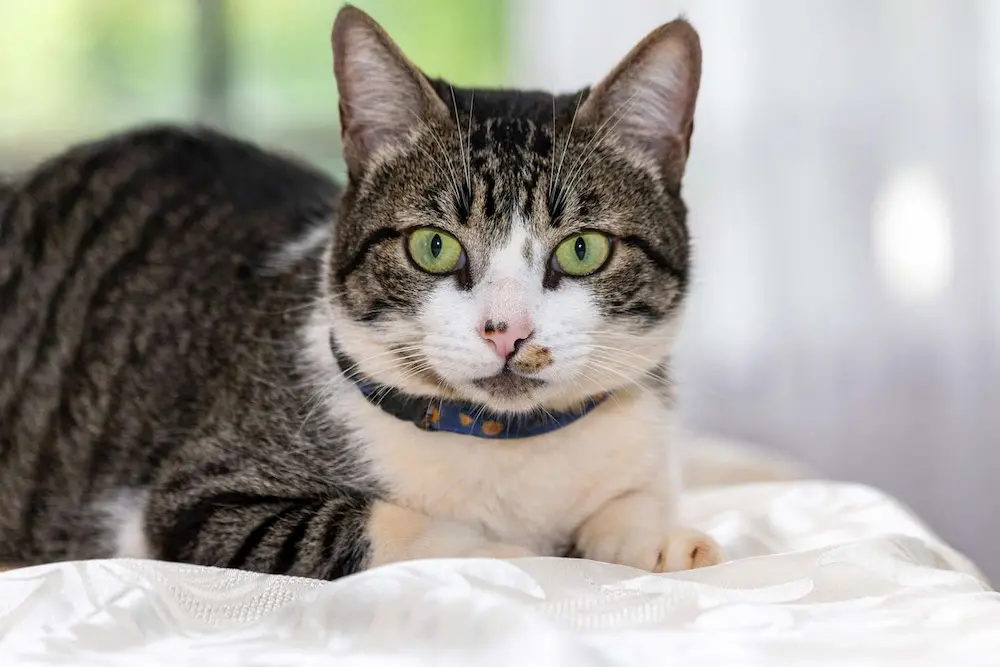
Diving into a rare gem in the feline world, let’s explore the American Wirehair, a breed that truly stands out.
This
Unique Coat and Personality Traits
The American Wirehair boasts a distinctive coat that’s as intriguing as it sounds.
Imagine a coat that’s springy to the touch, almost like a well-used scrub brush, but in the most endearing way.
Each hair is crimped, giving them a wiry texture that’s not only rare but also quite resilient.
This special coat comes in a variety of colors and patterns, showcasing the breed’s diverse beauty.
Let’s talk personality – these cats are the clowns of the
They’re playful and adaptable, making them perfect for just about any home environment.
They thrive on interaction and can often be found engaging in antics that will surely bring a smile to your face.
For those who worry about allergies or cleaning, here’s some good news.
Even though their unique coat, American Wirehairs don’t shed much.
Hence, they’re a bit easier on both the allergy sufferers and the vacuum cleaners in your home.
Besides, when you bring an American Wirehair into your life, you’re not just getting a pet; you’re getting a companion that’s eager to be involved in your daily routine, whether it’s following you from room to room or curling up on the couch for a movie night.
But, it’s essential to remember their coat does require some special attention.
While they may not need regular grooming like a Persian or a Balinese, ensuring their coat remains healthy without matting is crucial.
Think of it this way: a little bit of maintenance goes a long way in keeping your Wirehair looking and feeling their best.
To conclude, adopting an American Wirehair means welcoming a playful, adaptable, and almost clownish companion into your life.
Their unique wire-type coat is not just a rarity; it’s a testament to the breed’s special place in the
Whether you’re a seasoned
7. Turkish Van
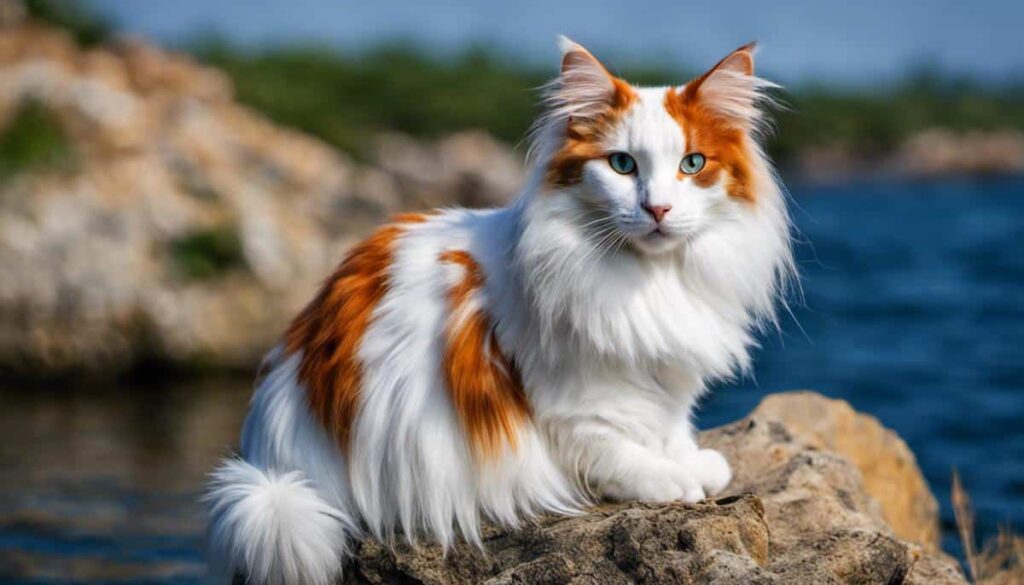
Stepping into the world of rare and splendid felines, let’s jump into the mesmerizing attributes of the Turkish Van.
Known for their love of water and striking appearance, these cats are a treasure trove of unique traits.
Special Features
What sets the Turkish Van apart are its distinct and captivating features.
For starters, the Van pattern on their fur is quite the showstopper.
Imagine a
This pattern is not just rare; it’s their signature style, making them easily distinguishable at first glance.
But there’s more to this
Their muscular build hints at their agility and strength.
Yet, even though their size, they carry themselves with grace and poise.
Let me tell you about a trait that’s as rare as the breed itself—their love for water.
Yes, you heard that right. Unlike most cats that would rather sunbathe than swim, Turkish Vans relish a good dip.
They’re known as “The Swimming Cats” for a good reason.
They not only like to paddle in water but are also known to be quite skilled at it.
Whether it’s a splash in a pool or a calm soak, these felines are in their element.
Besides, their athletic abilities extend beyond the water. Turkish Vans are adept climbers and hunters, showcasing their intelligence and independent spirit.
It’s fascinating to watch them in action, whether they’re exploring the great outdoors or simply exploring the nooks and crannies of your home.
In essence, owning a Turkish Van is like having a piece of historical elegance mixed with quirky, lovable traits.
Their playful yet refined nature makes them perfect companions for those who appreciate the unique interplay of personality and beauty.
And if you enjoy spending time by the water, well, you’ve just found yourself a furry friend who shares your passion.
8. Devon Rex
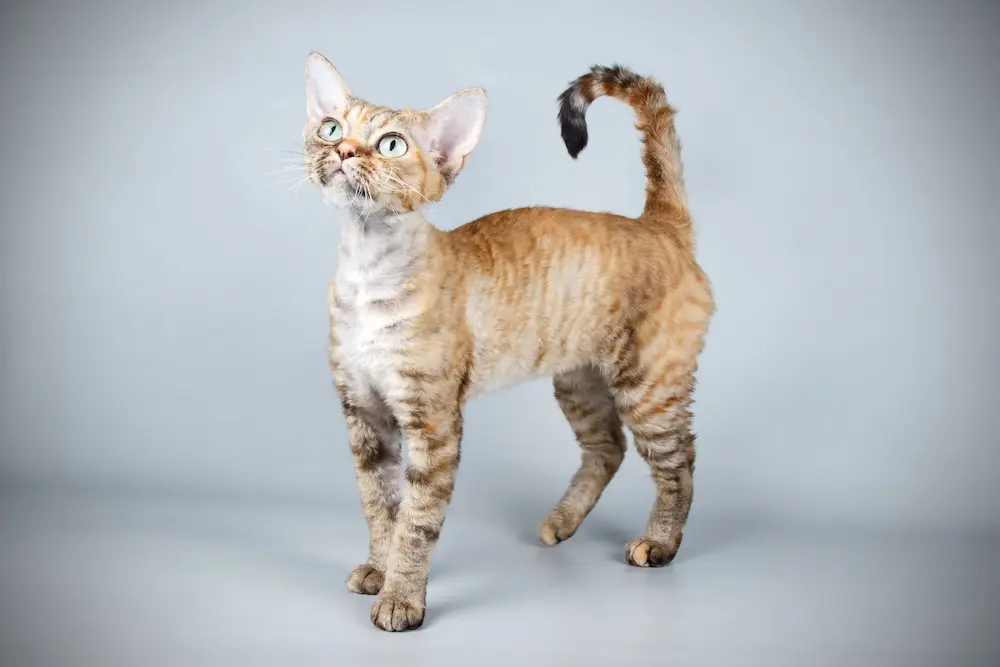
Moving on in our exploration of rare
This breed stands out not just for its distinctive looks but also for its captivating behavior.
Distinctive Coat and Behavior
One of the first things you’ll notice about the Devon Rex is its unique coat.
Unlike any other, the coat is short, soft, and unusually curly, including the whiskers! Picture the waves of a softly curled lock of hair; that’s the Devon Rex coat for you.
This is thanks to a genetic mutation that occurred naturally in the 1960s in Devon, England.
Their coat is not only visually striking but also feels like a warm suede to the touch, making petting them an irresistible experience.
But, it’s not just their coat that makes them stand out.
These cats have personality in spades.
Highly affectionate and loving, the Devon Rex craves human interaction and forms strong bonds with their families.
They’re the kind of companions that insist on being part of every aspect of your life, from curling up on your lap while you work to ‘helping’ you prepare meals in the kitchen.
Their intelligence level is as impressive as their affectionate nature.
This means they need regular mental stimulation.
So, equip their environment with
They’re at their happiest when they’re perched up high or engaged in play, often at head level so they can keep an eye on their territory and their humans.
Remember those interactive toys I mentioned?
A simple laser pointer can send them into a frenzy of excitement, and puzzle feeders are great for keeping their minds sharp.
Besides, due to their intelligence, the Devon Rex is incredibly trainable.
They can learn tricks, commands, and even walk on a leash, which is not something every
Think of them like the dog of the
Fetch, for example, isn’t just a dog game in their book.
Hence, if you’re looking for a lovable, interactive, and slightly quirky feline friend, the Devon Rex might just be the perfect match for you.
Their distinctive coat and behavior set them apart in the
9. Norwegian Forest Cat
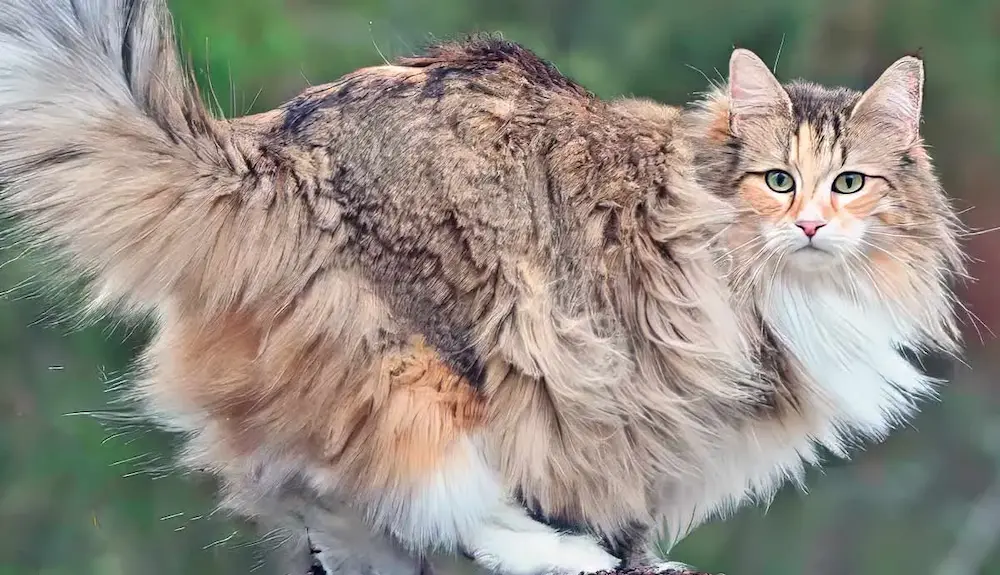
Following the enchanting Devon Rex, we’ll jump into the world of the majestic Norwegian Forest
Unique Physical and Temperamental Traits
The Norwegian Forest
Picture this: a
They’re like the gentle giants of the
With their broad chest and dense coat, Wegies exude strength and elegance.
Their fur, long and glossy, isn’t just for show; it’s a testament to their heritage, perfectly designed for the harsh climates of Norway.
Let’s talk about their personality.
Thought to have roamed the Norwegian forests for centuries, these cats have developed a strong, independent streak.
But, they balance this with a loving nature, making them perfect family pets.
They adore climbing and exploring, so don’t be surprised if you find your Wegie perched atop the highest bookshelf, surveying their kingdom.
Their long, luxurious coat does come with a price, though.
I can’t stress enough the importance of grooming.
Wegies shed moderately, which means brushing their coat weekly is crucial to prevent tangling.
And those impressive tufts in their ears? They need attention too, to keep them looking sharp and to prevent buildup.
Think of it as a bonding time with your Wegie!
Also, their double coat isn’t just for looks; it serves a practical purpose by providing insulation against cold weather.
It’s fascinating to see how their unique traits are a direct result of their natural habitat.
Taking care of a Norwegian Forest
But, their majestic presence and affectionate personalities make every effort worth it.
They’re not just pets; they become a part of your family, bringing warmth, fun, and a dash of Norwegian wildness into your home.
Frequently Asked Questions
How are Norwegian Forest Cats adapted to cold climates?
Norwegian Forest Cats have a dense, water-resistant coat that’s designed for surviving in Norway’s harsh cold climates.
Their physical traits, including a bushy tail and tufted ears, also help keep them warm.
Can Norwegian Forest Cats be family pets?
Yes, Norwegian Forest Cats are excellent family pets.
They are independent yet affectionate, enjoy climbing and exploring, and can add a loving and slightly wild character to any home.
What grooming is required for Norwegian Forest Cats?
Owing to their dense coats that shed, regular grooming is needed for a Norwegian Forest
This includes brushing to remove loose hair and prevent mats, along with care for their distinctive ear tufts.
Are there benefits to owning a rare cat breed?
Owning a rare
However, it can also come with specific grooming needs and health considerations.
Celebrating Rare Cat Breeds
Exploring the world of rare
Each breed brings its own unique charm and challenges.
Whether it’s the Devon Rex with its playful antics and easy grooming needs or the majestic Wegie with its love for the great outdoors and a bit more grooming commitment, there’s a rare
I’ve loved diving into their worlds, understanding what makes them special, and sharing it all with you.
Here’s to finding the rare breed that captures your heart!

